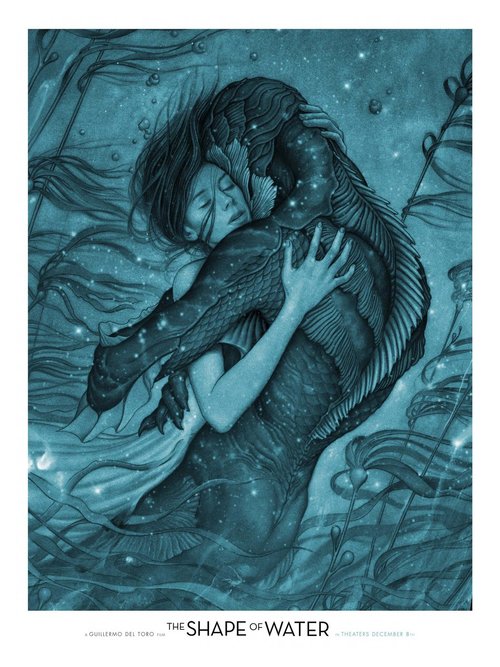Guillermo Del Toro’s latest addition to the fantasy genre is reminiscent of Pan’s Labyrinth, but in all the right ways. Both “Pan” and “Water” rely heavily on tales from old folklore, myth and legend; and both are magical realism in settings of wartime. While “Pan” tells us a story about the fae, “Water” focuses on mermaids. Del Toro has built a career around his darker fantastical visions; his style is unique in that the magic in the worlds he creates is always secondary to the characters living in that world. He makes us care about the characters; we cry for them when they hurt and laugh with them when they feel happy. As we enter into the fringe of awards season, Shape of Water leads the Golden Globe race with seven nominations for Best Drama, Director, Screenplay, Score and three acting nominations for Hawkins, Jenkins, and Spencer.
Sally Hawkins (“Happy-go-Lucky”) plays the mute janitor, Eliza. Within the first few minutes of the movie, her character’s whimsy sets the tone. She goes about her daily routine in a dancelike fashion, flitting from here to there without a care in the world. It’s hard not to take a liking to Eliza immediately. She converses amiably with her neighbor, Giles, a closeted homosexual, played by Richard Jenkins (“The Cabin in the Woods”). She goes to her job where we are introduced to her effervescent friend and fellow janitor, Zelda (Octavia Spencer, “The Help”). They spend their time mopping the shadowy halls of the facility, Zelda chatting amiably away, until something is brought into a chamber; a large cylinder reminiscent of an isolation chamber, inside is one whom the credits have dubbed Amphibian Man (Doug Jones,“Hellboy”).
In the minutes after learning about the existence of this creature we are giving the foundations of the plot. Michael Shannon’s (“Fahrenheit 451”) tenacious, unflinching character, Richard Strickland, reveals that he’s dragged Amphibian Man out of the dark depths of the Amazon all the way to this tiny seaside town to find out what makes the creature tick, hoping that in studying the creature they might make a breakthrough in breathing without air- something he believes could be very useful in the Space Race against the Russians. Strickland is everything Eliza isn’t; where Eliza is a mute, Strickland is always barking commands; where Eliza is bubbly and mischievous, Strickland is always down to business, no nonsense. The two characters dance around each other creating perfect balance in celluloid. Michael Stuhlbarg (“Call Me By Your Name”) plays Dr. Robert Hoffstetler, a scientist first and foremost, but he’s also doubling as a spy for the Russians. With the characters set on the murky stage, the story begins.
Perhaps the best part of this movie is the believability of the actions taken by the characters and the changes they endure as a result. Every character, no matter how small, is dynamic; they all learn something, and different things drive them each of them towards their goals. Even Strickland, the villain of the film, has specific reasons for what he does, and though he isn’t a sympathetic character, he is one who’s actions are easy to understand when looking at it from his perspective. Giles, Zelda, and Hoffstetler, too, all have their own moral dilemmas they go up against, and each one handles it in a way that makes perfect sense for their characters.









